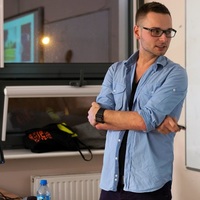Drawing on thousands of historical documents from Polish and Dutch archives, this book explores Cold War cultural exchange between so-called 'smaller powers' of this global conflict, which thus far has been predominately explored from the... more
Drawing on thousands of historical documents from Polish and Dutch archives, this book explores Cold War cultural exchange between so-called 'smaller powers' of this global conflict, which thus far has been predominately explored from the perspective of the two superpowers or more pivotal countries. By looking at how cultural, artistic and scholarly relations were developed between Poland and the Netherlands, Michał Wenderski sheds new light on the history of the Cultural Cold War that was not always orchestrated solely by its main players. Less pivotal states-for example, Poland and the Netherlands-likewise intentionally created their international cultural policies and shaped their cultural exchange with countries from the other side of the Iron Curtain. This study reconstructs these policies and identifies the varying factors that influenced them-both o cial and less formal. The book will be of interest to scholars working in art history, history of the Cold War, postwar European history, international cultural relations, Dutch studies and Polish studies.
Research Interests: Cold War and Culture, Cultural Cold War, Public Diplomacy, Cold War, Art and Aesthetics of the Cold War, and 9 moreCold War International Relations, Cultural Diplomacy, Soft Power, Cold War history, The Cold War, Art and Politics, Cold War Studies, Soft Power and International Relations, and Soft Power and Public Diplomacy
This book explores the issue of cultural mobility within the interwar network of the European avant-garde, focusing on selected writers, artists, architects, magazines and groups from Poland, Belgium and Netherlands. Regardless of their... more
This book explores the issue of cultural mobility within the interwar network of the European avant-garde, focusing on selected writers, artists, architects, magazines and groups from Poland, Belgium and Netherlands. Regardless of their apparent linguistic, cultural and geographical remoteness, their mutual exchange and relationships were both deep and broad, and of great importance for the wider development of interwar avant-garde literature, art and architecture. This analysis is based on a vast research corpus encompassing original, often previously overlooked periodicals, publications and correspondence gathered from archives around the world.
